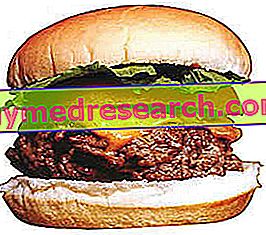What is that
Ghrelin is a hormone discovered in 1999 by a group of Japanese researchers. We are talking about a protein, an acylated peptide of 28 amino acids produced mainly by the stomach.
Ghrelin increases research and food intake (orizing properties) and decreases energy consumption (reducing physical activity).

Food influence
Considering the biological role of orexizer of ghrelin, it is obvious that the plasma levels of this hormone are normally maximum in fasting, while they reach minimum values after food intake and hyperalimentation. In one study, ghrelin plasma levels proved significantly superior to the norm in a group of bulimic girls; this finding could explain, at least in part, the hyperphagia crises to which those suffering from this eating disorder are subject. The concentrations of ghrelin in the blood of obese people, on the other hand, appear to be lower than those of normo-pedeso individuals.
Gastric ghrelin production covers about 50-70% of circulating levels, but this percentage is subject to compensatory production by pancreas, intestine, kidney, lung and hypothalamus.
Suppression of ghrelin release does not seem to be related to the simple distension of the gastric walls, but rather to the arrival of specific nutrients in the stomach. Sleep restriction is associated with a significant reduction in leptin (satiety hormone produced by adipose tissue) and an increase in ghrelin (appetite hormone).
Therapeutic Applications
According to what has been said, blocking or neutralizing the action of ghrelin would seem a reasonable approach to address chronic obesity states (in this sense a possible anti-obesity vaccine was thought); instead, the administration of a synthetic graelina analogue would be useful to stimulate the appetite in the presence of eating disorders such as anorexia.
Let us remember, however, that ghrelin is only one of the many substances implicated in the intertwined network of chemical and nervous mediators, which presides over appetite control. These substances include:
- leptin, insulin, Peptide YY (PYY), CCK (Cholecystokinin), CART (cocaine -anphetamine-regulated-transcript), Urocortin, Pro-opiomelacortin (POMC), a-MSH (Melanocyte Stimulating Hormone) (diminish appetite, anorectics ).
- endocannabinoids (β-Endorphins, Dinorphins, Enkephalins), NPY, MCH, ghrelin (increase appetite, oressigeni).



